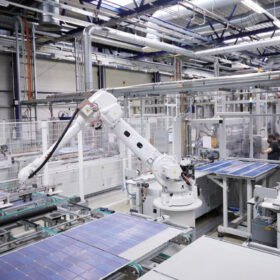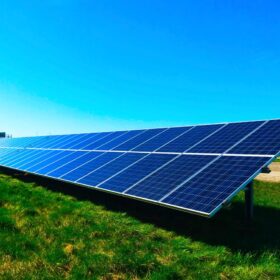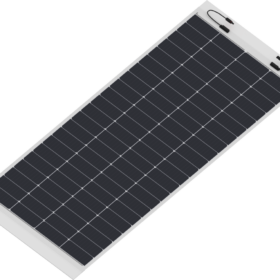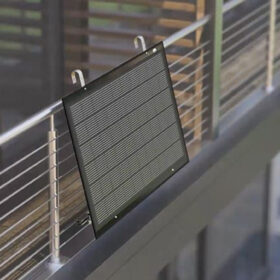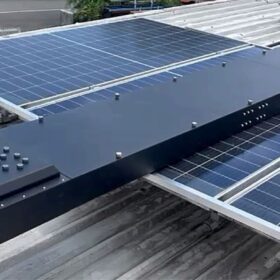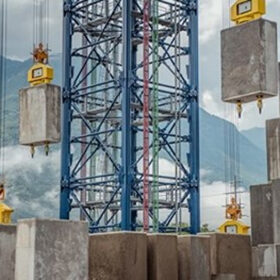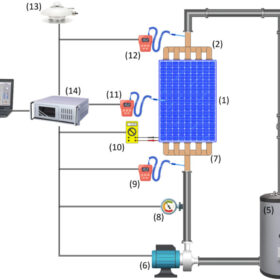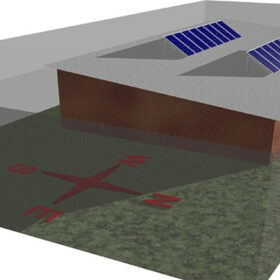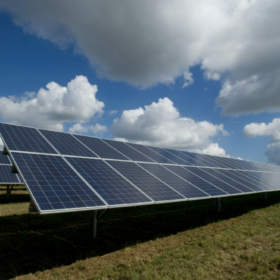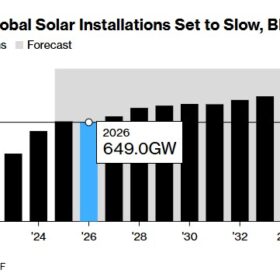AEG launches 23.3%-efficient ABC solar panel with 40-year warranty
AEG is currently offering three versions of its new ABC solar panels for rooftop applications, with power outputs of 445 W to 455 W and efficiency ratings ranging from 22.8% to 23.3%. They feature half-cut ABC cells with n-type technology.
Meyer Burger to cease PV module production in Germany
Heterojunction cell and panel manufacturer Meyer Burger says it will stop making PV modules in Germany, but it will continue to produce solar cells in the country to support its panel production operations in the United States.
Machine learning algorithm for inverter fault monitoring, prediction
The new algorithm monitors the inverter subsystems and sends alarms when maximum and minimum values are reached. It analyses data and categorises variables according to historic values.
GoodWe releases 335 W BIPV panels with 17.4% efficiency
The panels measure 2,116 mm × 777 mm × 3.5 mm, weigh 5.6 kg, and have a temperature coefficient of -0.35% per degree Celsius.
Italian startup unveils 350 W balcony TOPCon solar modules
Fly Solartech Solutions Srl’s new 60-cell modules have a power conversion efficiency of 17.87% and a temperature coefficient of -0.27% per degree Celsius. The company offers the panels with 300 W, CEI-021-certified microinverters featuring 96.5% peak efficiency.
Singaporean startup unveils illumination tech that ‘rejuvenates’ solar panels
NTU Singapore researchers and startup EtaVolt have presented a high-intensity illumination device that can reportedly “patch up” the holes caused by light and heat in silicon solar cells. The new technique is claimed to reduce solar module degradation by up to five years and to be usable for about 90% of the solar modules available in the market.
Control tech for modular gravity storage
A group of researchers in China has developed an energy management system for modular gravity storage. Compared to single block gravity storage, the modular counterpart offers more flexibility in output power, ease of mass production of related equipment and better flexibility in the selection of weights.
Master-slave technique for deploying parallel inverters in PV systems
Scientists in Czechia have proposed to use parallel inverters in PV systems to not only reduce instability, but also to increase power yield. The proposed approach reportedly results in higher maximum power point tracking (MPPT) performance.
Waste heat from PV panels used to generate residential hot water
Scientists in the United States has developed a new photovoltaic-thermal system design that utilises parallel water pipes as a cooling system to reduce the operating temperature of photovoltaic panels. The waste heat generated by this process is then used to generate domestic hot water.
Bifacial PV on rooftops can provide energy yield gains of up to 22.6%
Scientists in Australia have combined Monte Carlo Ray Trace (MCRT) techniques and electrical modelling to assess the potential energy gains of bifacial rooftop PV systems compared to monofacial arrays. They found that rooftop reflectivity is a key factor in increasing a bifacial PV system performance, and that system and module design should also be carefully considered.


